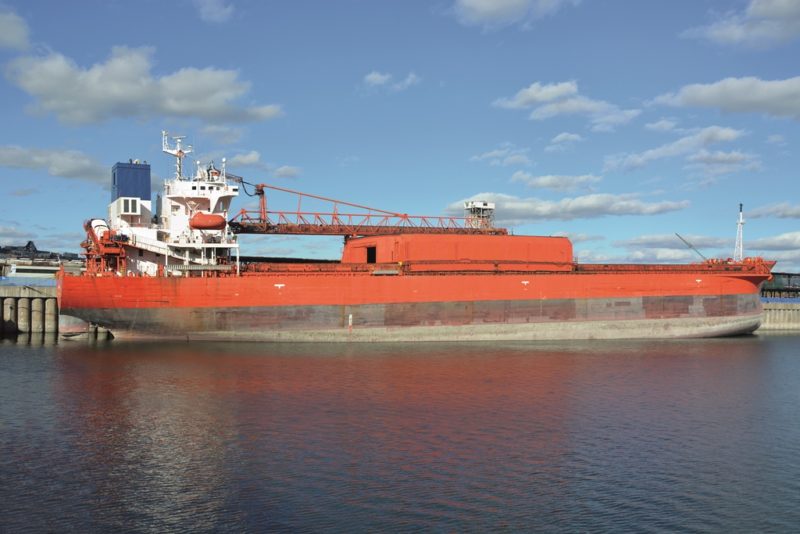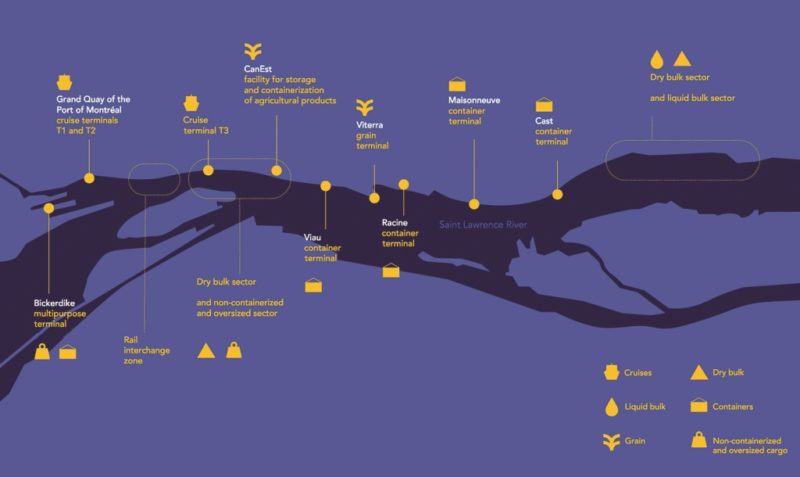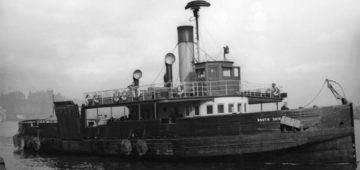
Montréal is a mainly French speaking large seaport with a total traffic of over 40 million tonnes of imports and exports per year. It is known as the ‘Gateway to the Great Lakes’ with both the smaller and older Lachine Canal and the modern St. Lawrence Seaway beginning at Montréal for access to Lake Ontario and on to the other Great Lakes. The French explorer Jacques Cartier navigated the narrow St. Lawrence river here in 1535, with the first French settlers arriving on 17th May 1642 to found Ville-Marie, now Montréal. Paul de Chomedey de Maisonneuve and forty French settlers arrived and built a small colony on Ile de Montréal. Small sailing ships began to dock along the extensive shoreline, overcoming the strong Sainte-Marie rapids, where the current Jacques-Cartier Bridge is located. Ships also unloaded their cargoes on Ile Normant, which was then transported to the town by merchants. Montréal is named after Mount Royal, the triple peaked hill in the heart of the city.
The Native American Huron people acted as pathfinders, guides and trappers for the French, with the French Army building up a considerable presence. The British were not going to allow France to dominate both Canada and the United States even as far down to the southern American area of Louisiana. The Royal Navy raided French coastal forts, French troops attacked British garrisons and trading posts. The issue was finally settled in the Seven Years’ War of 1756 to 1763. In 1759 on the Plains of Abraham, General James Wolfe and his troops routed a French Army under the Marquis de Montcalm and seized Quebec. Montréal capitulated on 7th September 1760, and as the British refused the honours of war to the French troops, those in Montréal and nearby Fort Levis burned their flags. The Huron people signed a separate peace treaty with the British on 5th September 1760.
The uneasy peace was soon shattered by the American War of Independence. The Canadian colonies remained loyal to Britain and fought off threats to both Quebec, Halifax (NS) and Montréal, but Montréal fell temporarily to the American colonists in 1775. When the war ended a year later, Britain and newly formed United States of America agreed to a very long straight boundary between Lake Superior and British Columbia in Canada, and the U.S.A., known as the ‘49th Parallel’.

JOHN YOUNG, FATHER OF THE PORT OF MONTREAL
In the Vieux Port (Old Port) of Montreal in front of Allan House at 333 De la Commune Street West, in the centre of the docks area, sits a bronze statue of John Young with the following inscription ‘Montréal has become the national port of Canada through the foresight, public spirit and energy of John Young’. He is known as the ‘Father of the Port of Montréal’, and had arrived in Montréal at the age of 19 years from Scotland, working as an import and export shipping clerk. A few years later he became one of the most influential of Montréal businessmen, and was appointed Chairman of the Harbour Commission in 1853, a position he held until 1866. During this period, the Harbour Commission concentrated on improving the accessibility and efficiency of the port and of the Lachine Canal, opened in 1825 to bypass the dangerous Lachine Rapids between the port and Lake Saint-Louis. The Lachine Canal was expanded twice in the 19th century and played an important part in the development of the Great Lakes, but was closed to commercial shipping in 1970, having been replaced by the St. Lawrence Seaway at the end of March 1969. The great achievements of John Young were as follows:-
- He dredged a deeper channel in the St. Lawrence river to allow larger ships to reach Montréal.
- He built many of the present day quays in the Vieux port.
- He reorganised the customs posts and methods.
- He widened the Lachine Canal to a width of 14.6 metres, depth of 1.4 metres, and of total length of 13.4 kilometres.
- He introduced rail access into the port areas.
- He built the Victoria Bridge to extend the railway from the south shore to the port on the north shore.
- He extended the Port of Montréal from the Lachine Canal to the Hochelaga wharf in the east, with rail access having been installed there for seven years in 1860. Some 259 ocean going sailing ships and steamers arrived in 1860, but with a massive increase to 574 ships in 1861.
The Harbour Commission had been created in 1830 by the Montréal Trade Board (now the current Chamber of Commerce) to expand and improve the port, and to construct permanent wharves and a flood retaining wall, pressing the Dominion Government to pay for the dredging of the river. The new port wharves extended to a length of one kilometre in 1832, and as an incentive for the first ocean going vessel to reach Montréal in early April after the winter ice-up, a Top Hat was awarded in 1840 to the Master of the first ship to arrive. This would be later replaced by a gold headed ‘Walking Cane’ around 1880, and was a similar cane to that presented to the Master of the first ship to arrive at Churchill in Hudson Bay.

Four years of major dredging work ended in 1854 to allow the passage of larger vessels to the port, with the channel between Quebec and Montréal dredged to a depth of 4.9 metres and a width of 76.2 metres. The first Allan Line ship arrived in the port in 1856 to begin a regular shipping service between Liverpool and Glasgow to Montréal. Hugh Allan was a Scottish born businessman who later settled in Montréal and lived in a large house along the river as one of many shipping line owners that made up the maritime community of Montréal, and far larger than that of Quebec. The Victoria Bridge opened in 1859 as the first link with the South Shore and was the longest rail bridge in the world at 2,790 metres at the time of its opening.

Sign-up today to read the full article!
Simply click below to sign-up and read the full article, as well as many others, instantly!





Comments
Sorry, comments are closed for this item